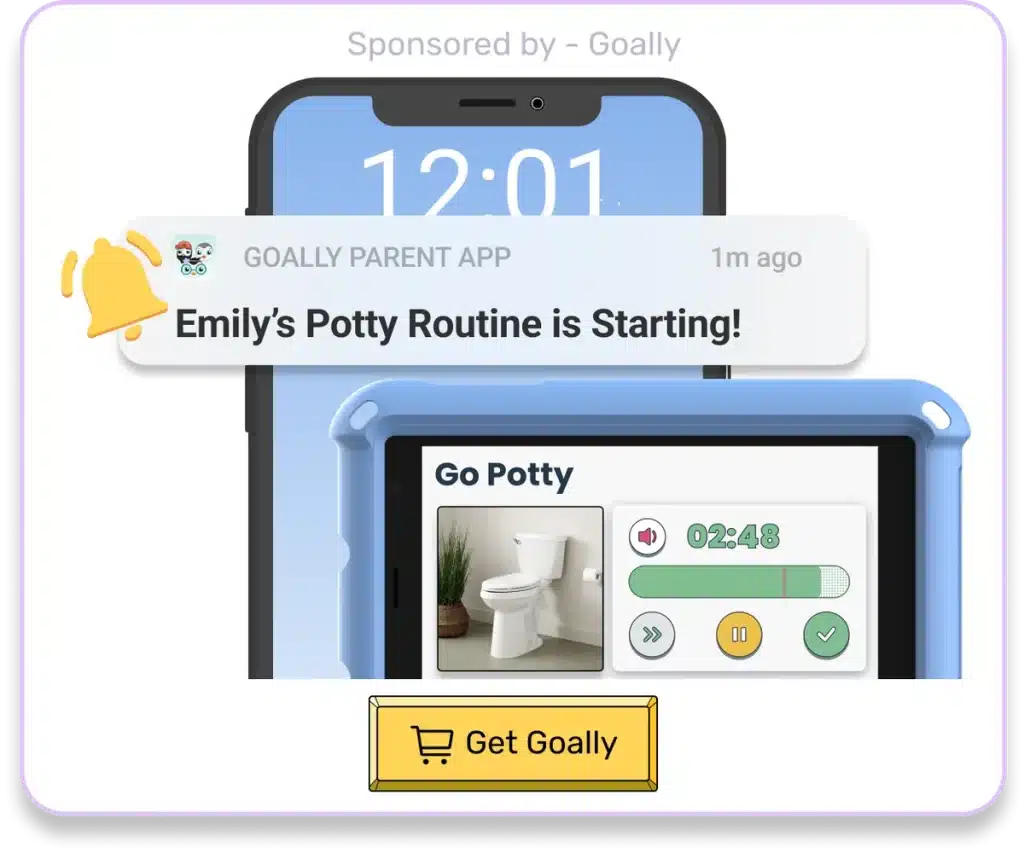Do you ever feel like no matter how much you prepare for the day, nothing seems to go the right way? Your day-to-day power struggles with your kid or client never seem to get easier and you have given it your blood, sweat, and tears. Where’s the relief and satisfaction in feeling like you have done a great job as a parent, teacher, or clinician? Good news! There is hope! The focus of this blog post is to provide “easy to use” evidenced-based antecedent intervention tools (power tools) to ease those daily power struggles with kids. These power tools are proactive measures to help increase desired behaviors as well as decrease the likelihood of undesired behaviors.
Table of Contents
What Are These Proactive Measures To Aid in Power Struggles With Kids?
I bet you are sitting there and asking yourself, “Okay, really? What are these ‘proactive measures’ and are they really going to help?” Let’s talk about it! Proactive measures are antecedent interventions that take place right before a behavior happens. An Antecedent is an environmental condition or stimulus change that occurs immediately before a behavior. There are many countless examples of environmental conditions or stimulus changes, for example, having a clean or cluttered home, an unexpected situation that comes up, a change in routine, lights flashing, scratchy clothes, hearing a loud noise, textured food, etc. A good way to look at it is that a stimuli is an energy change that affects any of your five senses: touch, taste, hear, see, and smell. This change in energy increases or decreases the likelihood of a behavior to happen.

Again, you say, “So, what are they?” These 4 tools are preference/choice, priming, timers, and pairing. This blog will go into detail for each “power tool” and how to apply these strategies with your child or client. Your day-to-day activities will become more enjoyable with the hopes to decrease those power struggles with kids.
Preferences/Choices
People of all ages who have health conditions that affect their daily lives should be able to express their thoughts, feelings, and preferences, whether it’s a simple choice or a complex decision. As a parent, teacher, or clinician, the top priority is to ensure that the child stays safe. However, this often means that the decisions made by adults overrule the child’s choices and preferences, under the assumption that they always know what’s best. It’s worth considering where you can compromise and how you can modify the environment to provide options and preferred choices for your child. Of course, it’s important to ensure that the options presented are safe and enjoyable for your child. Here are some examples that you may be able to relate to.
1. Change Is OK
We have grown to adapt to schedule changes on a daily basis. Sometimes our days change for the better and sometimes our days change for the worse. It’s the same for your child. Allow your child to choose different activities that they would like to do throughout the day. Visual schedules help them stay on track but it is not always necessary depending on your child’s needs. It’s OKAY to switch up a daily schedule, especially if it is in favor of your child and it is safe and feasible to do. It is also OKAY to follow through with important events throughout the day such as appointments that can’t be rescheduled. Find a healthy balance between which events are truly important and which events can be flexible.
Goally | The Safest Tablet for Kids

2. Provide Preferred Options
Transitioning from one difficult task to another can be tough and may result in decreased motivation. Offering preferred options to your child not only gives them a chance to voice their opinion but also helps to develop their independence. As a parent, it’s natural to make decisions based on factors like time, money, protectiveness, and personal preferences. However, it’s essential to involve your child in the decision-making process and consider their preferences just as much as their safety and happiness. Finding a balance between what’s best for your child and what they want is key to their growth and development.
3. Reinforcement!!!
You would like your child to put his/her clothes on within a reasonable time. Before placing the demand to clean the room, motivate him/her by providing 2 to 3 options for preferred reinforcement when the task is complete. Following through with this will establish behaviors over time as well. Stay strong! If your child does not complete the task, provide less preferred activities, and limit access to those highly preferred options.
4. Set Boundaries and Provide Alternatives
When an activity is not available such as playing baseball in the house, instead of taking away their toys, change the environment to a safer area such as outside or a nearby park. Another great example is when your child wants to color on a chair. Instead of taking away the markers, set boundaries and options as to where he can color (kitchen table, outside, on the tile floor with newspaper underneath). Providing these options can begin to ease power struggles with kids and increase appropriate behaviors.
In conclusion, provide simple, PREFERRED options (no more than 2-3) to accommodate your child’s needs. Allow your child to have a voice in his/her day to day activities. Motivate your child to complete difficult tasks by providing highly preferred activities or choices once the activity is complete. Establish boundaries and provide options BEFORE a behavior. Manipulate the environment to increase or decrease the likelihood of a behavior to happen.
Priming… What’s That?
The book, Effective Practices for Children with Autism, defines priming as a type of antecedent intervention in which the target behavior is practiced immediately before being performed, and priming sessions consist of verbal modeling and instruction to perform a behavior, followed by reinforcement of that behavior. In other words, Priming is a verbal or modeling action to show your child how to do something, to explain expectations, or to express what will happen before the behavior or event takes place. Think of priming as a warning or a reminder of what is going to happen. Below are some examples.
1. Modeling and Verbal Communication Through Priming

Read more: Autism Communication Cards
Being able to effectively communicate with your child through modeling and verbal communication is crucial to your child’s growth. One important factor in priming through modeling and verbal communication is to make sure your physical actions are not only the desired actions you want your child to imitate but that these actions are presented BEFORE your child engages in the activity as well as having clear and direct verbal communication. For example, you can tell your child, “When it is time to clean your dishes, I want you to do it like this,” and then show your child the correct way to clean the dishes.
2. What’s Expected?
Prime your child by letting him/her know what is expected. An example of this is saying, “Remember to walk in the street,” before your child begins to walk in the street. Priming can promote safety and awareness for your child. Additionally, reinforcing this behavior will increase independence in which you will be able to fade your priming prompts out. Another great example of priming is reminding your child to keep safe hands and body, especially around their peers. This simple reminder can create positive interactions with your child and other peers. Simple reminders of what is expected and setting boundaries is a great way to decrease those power struggles with children.
3. What Will Happen?
Prime your child by letting him/her know what is going to happen. For example, you can tell your child, “In about 2 minutes we are going to turn the t.v. off and eat dinner.” Being able to explain what is going to happen before it happens allows your child to prepare for a change within the environment. Another example is alerting your child for any immediate or future change in plans. Giving your child time to process a changing environmental factor and being able to help your child go through that process before the change happens, will reduce anxiety in both the parent and the child.
Timers
Timers are the easiest tools to utilize, yet the hardest tools to remember. It is a great visual tool (keyword being VISUAL) to help your child stay on task, the transition from a preferred activity to a non-preferred activity, or warn your child when it’s time to give up or share a preferred item. Just like priming, prompting your child ahead of time by utilizing a visual timer, can decrease those power struggles with kids.
1. How To Use a Timer
Verbally telling your child how much time is left to complete a task, transitioning to a different task, or giving up a preferred item will help your child adapt to his/her environment more smoothly. For example, set a timer for 30 minutes to eat dinner (the set time can always vary). Prime your child by letting him/her know that they have 30 minutes to eat dinner. Periodically remind your child how much time is left “You have 20 minutes left, 10 minutes left, 5 minutes left, 2 minutes left, 30 seconds, 3,2,1 all done.” During this time it is recommended that the visual timer is displayed within eyesight but out of reach. They can then not only hear the warning prompts but be able to visually see it as well. You are presenting information in which your child is receiving through 2 different senses (seeing and hearing). Since every child reacts differently to visual displays and verbal prompts, don’t be afraid to experiment on how to use a timer. Figure out what works best for your child.
2. Honoring More Time
Is there enough time to honor more time? Is the next activity or task going to be easy or hard for your child? Will honoring more time disrupt others? How many times do you allow more time? These are some questions that can guide you on whether you should allow more time for your child to continue playing. Consider if honoring more time with an activity or item will impede on the next task or event. If it is appropriate and feasible, allow an extra minute or two with an activity or item. Honoring more time can be very effective in decreasing those power struggles with children. Only allow more time with a preferred activity or item on up 1 or 2 opportunities. If requests continue to persist from your child, provide other options.
3. Following Through
After you allow your child to have more time with an activity or item, make sure to follow through with the removal of activity or item, or mentioned above provide other options. Following through sets boundaries and what is expected of your child. As a parent, you do not want to be pushed around by your child and taken advantage of, but you also want to avoid those power struggles. Find a healthy balance between honoring more time and following through when it is time.
4. Picking Your Battles
Have you ever heard your child tell you “NO!” when it is time to turn the tv off? All they want to do is keep watching and you are standing there thinking “Oh boy, here comes a power struggle.” It is painful to go through and it usually ends in tears. Pick your battles. Use your priming tools, timers, and follow through to set those boundaries. How can you manipulate the environment in which the battles you pick do not become detrimental to growth and understanding? For example, your timer goes off to get ready for bed. At this point you set the timer, honored more time, and you are ready to follow through. It’s a battle you have to pick. How can you reduce the effort in getting ready for bed? Maybe bring the clothes to your child. Motivate your child to engage in getting ready. When you pick your battles, ease the pain for both the parent and the child.
In conclusion, utilize a visual timer app. Provide prompts while the timer is counting down. Honor more time if time allows. Follow through after you honor more time. Pick your battles. Choose your power struggles with children wisely and reduce the effort to complete tasks.
Pairing- A.K.A. Having Fun!
“What is pairing?” you ask. A parent who is the source through which reinforcers are received can become a conditioned reinforcer as a result of the ongoing pairing with other reinforcers. There are highly motivating items and activities that your child loves to engage in. If you engage in those items and activities, there is a chance you become just as reinforcing. This is an opportunity to be able to have fun with your child. The best part, this fun creates instructional control. Instructional control is defined as dealing with the likelihood that presented instructions will lead to the desired behavior. You can finally have relief that playing and engaging with your child will ultimately help your child follow through with certain demands and requests that are placed. Below is an outline of effective ways to establish instructional control.

1. Enjoy Activities They Prefer
Your child has certain preferences and fixations. During times you intend to pair, engage in those preferences. It may seem uncomfortable or socially unacceptable, but these are the moments you must cherish most. You do not have to allow it all of the time, but a bit a day goes a long way. Remember, these activities and preferences are your child’s. As mentioned above, it is easy for parents to influence their interests and preferences, but keep in mind your child’s preferences as well.
2. Remove Feasible Demands
This is a time where placing demands should only be acceptable when direct and indirect safety is a concern for himself/herself or others. As mentioned before, pick your battles and provide other options when necessary. Experiment within the environment on how you can keep your child safe such as adding or removing hazardous items around. This limits certain demands. Some examples are “Don’t touch the outlet (cover the outlet), turn the water off (have a timer on outside water), leave your sibling alone (remove the sibling).” These simple adjustments within the environment help eliminate verbal demands on your child.
3. Take a Deep Breath and Allow Your Child To Explore in a Safe Environment.
Take a deep breath. As a parent, you have earned to relax and feel proud. Your love and a continuous search to help improve your child’s quality of life is so appreciated and respected. This is a time to allow your child to explore the way you have explored to improve their journey. Limiting restrictions in their independent play will allow them to search and manipulate their surroundings. Always keep your child safe, but allow exploration and independence (of course with guidance) into your child’s life and you will see improvements day by day.
Goally | Routines that Actually Work
Goally’s skill building tablet for kids has routines that break down large tasks into small, achievable steps. It helps kids complete their tasks independently!

Create custom routines with your own videos & pictures for every step. The steps come in small, bite-sized pieces to help your child learn the little fundamentals (like putting the toothpaste on their toothbrush!) to achieve bigger goals. And that’s just the beginning. See it in action:
Power Struggles With Kids: Final Thoughts
An antecedent is an environmental condition or stimulus change that occurs prior to a behavior. Antecedent interventions are strategies that are implemented before a behavior happens. This can influence (increase or decrease) the likelihood of a specific behavior. These antecedents are environmental factors in which your 5 senses have the ability to take in.
Ease your mind and know that these power tools are here to help with the day-to-day power struggles with your kids. Preference/choice, priming, timers, and pairing are tools for you to utilize to decrease those power struggles. Experiment with these tools by integrating them simultaneously. For example, providing choices when your timer runs out, prime to warn your child when the time has expired, honor extra time, and always follow through. Most importantly, Don’t forget to pair (play) with your child whenever you can. There isn’t a one size fits all. Figure out what works best for your child while applying these simple tools.
FAQs About Power Struggles With Kids
What are power struggles with kids? A power struggle with kids is a situation where a child refuses to do something that a parent or caregiver wants them to do, leading to a battle for control. What are some common triggers for power struggles with kids? Some common triggers for power struggles with kids include fatigue, hunger, stress, and boredom. How can I avoid power struggles with my special needs child? You can avoid power struggles with your special needs child by setting clear expectations and boundaries, offering choices, using positive reinforcement, and giving them a sense of control. What are some strategies for dealing with power struggles with kids? Some strategies for dealing with power struggles with kids include remaining calm, using humor, offering incentives, and giving the child a chance to save face. What should I do if a power struggle escalates with my special needs child? If a power struggle escalates with your special needs child, it's important to take a break and allow both of you to calm down. Then, you can try to find a compromise or solution that works for everyone.
This post was originally published on 12/28/2020. It was updated on 12/29/2023.
Alexandra Hakeem is a Denver based BCBA. In her free time, Alexandra enjoys snowboarding, volunteer work, and hanging out with her nieces and nephews.

Goally
We help parents teach their kids life skills, like doing bedtime and morning independently. Backed by science, we incorporate evidence-based practices and expert-informed designs in all of our apps and content.






